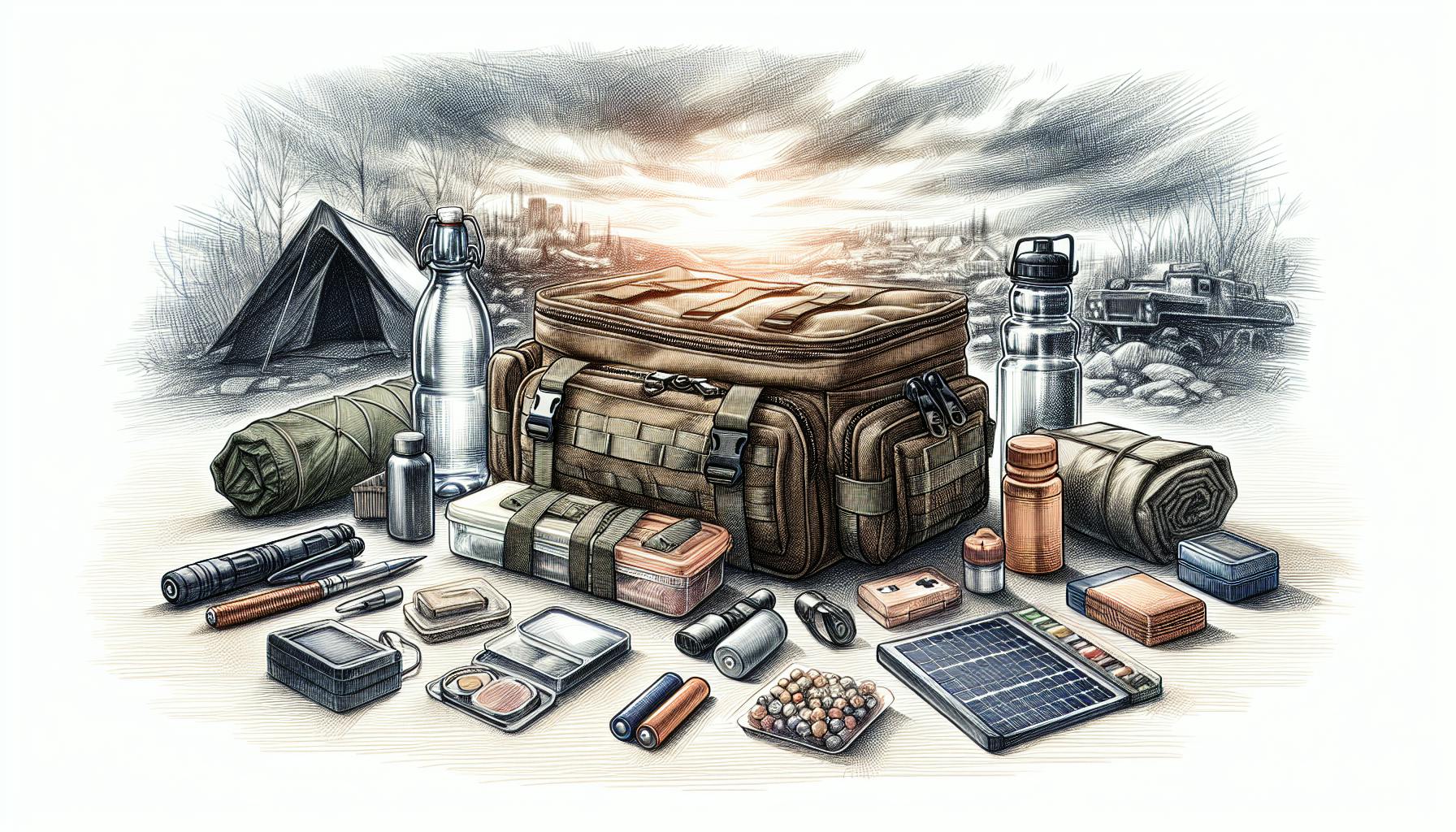Introducing Ranger Beads
Ranger beads are a simple but effective navigational tool used by hikers, hunters, and military personnel. They allow you to easily keep track of distance traveled without the need for batteries or electricity. Ranger beads can be made from various materials like paracord, plastic, or metal. They provide a redundant navigational system in case other tools like GPS or compasses fail. With some basic math skills, ranger beads give you an analog way to track how far you've gone.
What Are Ranger Beads?
Ranger beads consist of a length of cord or rope with knots, beads, or other markers tied at precise intervals, usually every 10 meters. As you travel, you slide the beads along the cord to keep a count of the distance covered. Ranger beads can be looped around your neck, wrist, or backpack for easy access. By counting the beads passed, you can quickly calculate total distance traveled. It's a simple and low-tech approach to navigation.
History and Origins
The use of beads and knots for distance measuring originated with indigenous cultures worldwide, including Native American tribes, Aboriginal Australians, and African Bushmen who relied on natural navigation methods. Modern ranger beads first came into widespread use during the Vietnam War in the 1960s, where American soldiers employed them as a backup way to navigate the dense jungle terrain when compasses and maps proved unreliable. The name "ranger beads" comes from their extensive use by Army Rangers needing to accurately track patrol routes and distances traveled behind enemy lines. Accounts from Long Range Reconnaissance Patrol teams cite ranger beads as an essential tool for covert navigation and calculating extraction points in the field.
Materials Used to Make Ranger Beads
550 paracord makes a popular choice for ranger beads, given its high strength and flexibility compared to standard cordage. Many preppers recommend Mil-spec 550 cord from brands like Paracord Planet or Titan Survival Cord for the best durability. Plastic beads with large 1/2" holes work well, as they slide freely without catching on the inner cores of the paracord. Popular options are Hobby Lobby beads or Wood Beads Ocooca brand from Amazon. Metal ball bearings also work for a clicking sound when slid along the cord. Some outdoor brands like Core Survival and Ultimate Survival Technologies sell pre-made tactical ranger bead sets optimized for navigation.
How to Use Ranger Beads for Navigation
Using ranger beads takes just a few simple steps. First, determine your direction of travel and mark your starting point. As you hike, slide one bead down for every 10 meters covered. Multiply the number of beads passed by 10 to get your total distance traveled. For example, if you've passed 5 beads, you've gone 5 x 10 = 50 meters. Ranger beads are great for keeping pace counts when rucking. They provide a redundancy to prevent getting lost if you lose your bearings. In an emergency grid-down scenario, ranger beads give you a reliable non-electric backup to modern navigation tools vulnerable to cyberattacks or EMPs.
Benefits of Ranger Beads
Ranger beads give you a backup navigation method if your GPS fails or runs out of batteries. They require no power source, working in any weather conditions day or night. Ranger beads are lightweight and compact, making them easy to carry in a bug out bag or survival tin. They also complement other tools like a compass. Overall, they make a simple and foolproof navigational tool. When electronics may be compromised, ranger beads are an EMP-proof way to find your way.
Comparing Ranger Beads to Other Navigational Tools
Ranger beads occupy a useful niche between more primitive tools like a compass and high-tech options like GPS. They provide greater accuracy than just counting your paces, but don't depend on electricity or satellite access. This makes ranger beads a great EMP-proof backup for grid-down scenarios. While not as sophisticated as GPS, ranger beads get the job done for most basic navigation needs.
Ranger Beads vs. GPS
GPS utilizes advanced technology like satellites and built-in maps to enable precise navigation and display coordinates. But GPS depends on battery power and a signal. It's also vulnerable to cyberattacks, solar storms, and EMPs that could render it useless. Ranger beads are lower tech but more resilient and work when electronics fail. Both tools have their place depending on your situation.
Ranger Beads vs. Compass
A compass provides directional assistance but no ability to track distance traveled. In areas with thick forest or whiteout conditions, compass navigation can fail. Ranger beads nicely complement a compass by adding reliable distance measuring. Combining the two tools creates useful redundancy in case one fails. In a long-term disaster, ranger beads ensure navigation ability if compasses become damaged or lost.
Ranger Beads vs. Pace Count
Keeping track of your pace count requires continuous focus and math skills. It's easy to lose track over long distances. Ranger beads automate the process of counting paces, saving mental effort. Having a visual tool provides valuable reinforcement compared to just counting in your head. For high-stress evacuation situations, ranger beads help maintain accuracy when cognitive function is impaired.
Making DIY Ranger Beads
With some basic materials, you can make your own custom ranger beads at home. Here are step-by-step instructions for a DIY paracord and bead set:
Supplies Needed
- 10-20 feet of 550 paracord
- 18-30 plastic or wooden beads, at least 1/2" diameter
- Lighter or matches
Knotting the Cord
- Cut the paracord to your desired length based on use. Melt the cut ends to prevent fraying.
- On one end, tie an overhand knot, leaving a 1-2 inch tail. This stops the beads from sliding off.
- Tie overhand knots precisely 10 meters apart along the cord's length, using a tape measure.
- Tie another overhand knot about 1 inch from the un-knotted end. Melt the end.
Stringing the Beads
- Slide one bead over the knotless end and down to the first knot.
- Continue sliding on beads, pushing them over each knot as you go.
- When you reach the end, melt it to secure in place.
Using Your DIY Ranger Beads
Attach your custom ranger beads to your belt or backpack and start navigating! Be sure to practice regularly to get a feel for the 10 meter intervals. DIY ranger beads provide an affordable, reliable navigation system for preppers.
sbb-itb-b932644
Recommendations for Effective Use of Ranger Beads
To get the most out of your ranger beads, follow this expert advice for an optimal setup and plenty of practice. This will ensure you can rely on them in an emergency.
Choosing Your Ranger Bead Materials
Select durable, high-strength paracord that won't fray like Mil-Spec 550 cord. For beads, 1/2" plastic or wood beads slide the most smoothly. Square beads are less prone to shifting than round. Brass beads add useful noise. Pick bright fluorescent colors like orange for visibility.
Determining Optimal Ranger Bead Length
Longer ranger beads allow you to track more distance but can become unwieldy. A length of 10-20 meters is ideal for short hikes, while 50-100 meters suits long distances. Have a few different lengths for varying needs. Store multiple sets in your go-bag.
Securing Your Ranger Beads for Quick Access
Wearing your ranger beads around your neck makes them always accessible. Otherwise secure them by clipping to your pack or belt loop using a carabiner. Store in a dedicated water-resistant pouch when not in use. Leave some slack so beads can slide freely.
Practicing Navigation with Your Ranger Beads
Take practice hikes using just your ranger beads for navigation. Confirm their distance estimates with GPS. Test them at night or in bad weather to improve skill. Learn to quickly reset bead positions at waypoints. Develop a feel for terrain-based pacing. Intentionally get lost, then use ranger beads to recover position.
Modifying Ranger Beads for Tactical Use
You can integrate glow sticks or LED lights into the cord for low-light visibility. Use coyote brown paracord to reduce visibility. Break up bead colors to avoid detection. For stealth movement, use noiseless plastic beads over metal bearings when needed.
Key Takeaways on Ranger Beads
- Ranger beads are a reliable, low-tech backup navigation tool that tracks distance by sliding knots or beads.
- They complement other tools like maps, compass, and GPS to provide redundancy when electronics fail.
- Made from paracord, plastic, or metal, ranger beads require no batteries or electricity.
- With practice, ranger beads build key wilderness skills and situational awareness.
- In an emergency or grid-down scenario, ranger beads enable navigation if modern technology is compromised.
Conclusion
Ranger beads are a versatile navigation tool with survival applications for preppers and outdoor enthusiasts alike. They bridge the gap between primitive methods like dead reckoning and sophisticated technology prone to failure. With a basic DIY setup and training, ranger beads enhance your navigation abilities to safely track distances. This can be a lifesaver if caught without modern tools due to an EMP or cyberattack. Ranger beads epitomize the self-reliant spirit of prepping ingenuity. In uncertain times, tried and true methods are worth revisiting. Consider adding ranger beads to your survival kit to navigate without null reliance on electronics.


